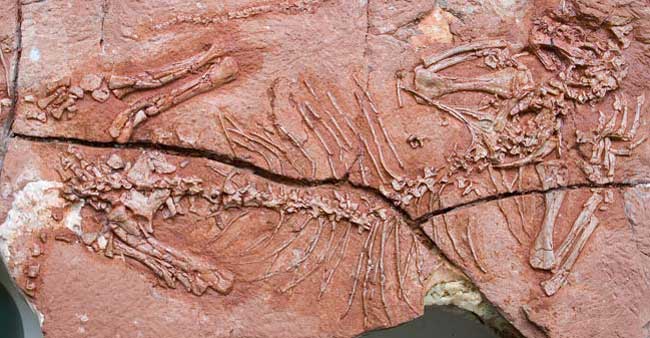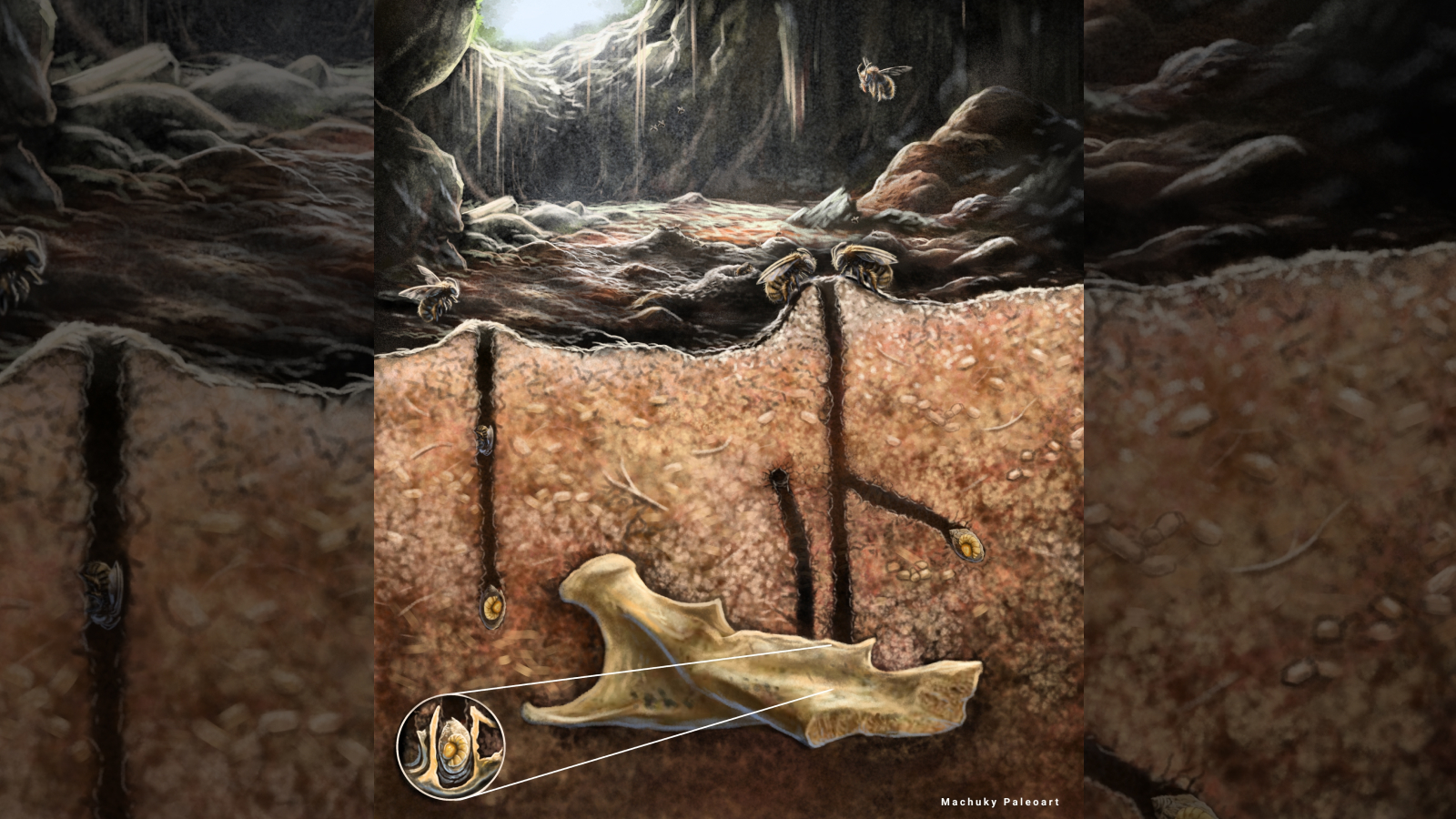Before Dinosaurs, the First Tree-Climber Revealed

Long before dinosaurs dominated the Earth, ancient relatives to mammals climbed forests to feed on leaves and live high above predators that prowled the land.
The elongated fingers, opposable "thumb," long curved claws and grasping tail of a small, huge-eyed plant-eating animal known as Suminia getmanovi demonstrate that this is the earliest known tree-climbing vertebrate, scientists now reveal.
These findings shed light on the giant shifts in what animals dined on before the dawn of the dinosaurs.
Buried by catastrophe
The researchers analyzed more than a dozen exceptionally well-preserved complete skeletons of Suminia discovered in 1990 in a single large block of red mudstone in central Russia's Kirov region dating back some 260 million years ago to the Late Paleozoic, roughly 30 million years before the dinosaurs, when land was concentrated in the super-continent Pangaea.
They were apparently killed and buried rapidly, perhaps by a mudslide or a similar catastrophe, in the flood plains where they dwelt.
Specimens included both youngsters and mature adults, which helped provide a complete picture of the animal's skeleton over time. The fact that so many were found together could mean Suminia was a social animal.
Get the world’s most fascinating discoveries delivered straight to your inbox.
"It's relatively rare to find several animals locked on a single block," said lead researcher Jörg Fröbisch, a paleontologist at the Field Museum in Chicago. "We have examples of virtually every bone in their bodies."
Avoiding the carnivores
The ancient creature was relatively small — about 20 inches (50 cm) from its nose to the tip of its tail. Like mammals, Suminia was a synapsid, which all originally possessed a single hole in each side of their skulls to allow more room for the jaw muscles. (Dinosaurs, lizards, snakes, crocodiles and birds are diapsids, which all originally had two holes in each side of their skull.)
Fossilized dung pellets roughly the width of a fingernail (1 cm) that contained shredded leaves were also found with the skeletons. Abrasion marks on its large, distinctive teeth suggest it was an herbivore that fed on coarse, fibrous plants.
Suminia had very long hands and feet, each up to 40 percent of the length of the limbs, which along with its grasping tail, opposable "thumb" and long curved claws suggests it evolved to grab branches. They likely dwelled in extinct plants called seed ferns that could grow several yards high, high enough for them to evade carnivores waiting for them on the ground, "all of which were synapsids as well, more closely related to mammals than reptiles," Fröbisch said.
Discovering that vertebrates took to climbing forests so early in history was unexpected.
"It's a surprise, but it makes sense," Fröbisch said. "It was a new niche for vertebrates. There was food available and they avoided predators on the ground."
Until now the earliest known tree-dwelling vertebrate were drepanosaurid reptiles, "whose body plans were very similar to chameleons, although they were completely unrelated," Fröbisch explained. These reptiles, which like chameleons had two opposing fingers instead of the one thumb as in humans, appeared 30 million years after Suminia.
The fact that vertebrates were climbing forests millions of years earlier than once thought sheds light on huge shifts in how animals interacted with each other back then near the end of the Paleozoic.
Lots of predators
"The first ecosystems on land were very different from modern terrestrial ecosystems," Fröbisch explained. "You had a lot of predatory animals, a lot of meat-eaters, and while plant-eating lifestyles evolved several times, they weren't dominant. But then you saw a humongous shift, from lots of carnivores and relatively few herbivores to lots of herbivores and few carnivores — the evolution of modern types of terrestrial ecosystems."
"So this shift in what food is eaten all of a sudden increases competition for plant food resources, and shortly after this shift, you see Suminia invade this ecological space for the first time," he added.
At the end of the Paleozoic, before the rise of the dinosaurs, synapsids dominated ecosystems on land, with herbivores such as tusked Australobarbarus as well as carnivores such as bear-sized, saber-toothed Inostrancevia. But then the most severe mass extinction in Earth's history struck, the end-Permian event, and the dinosaurs came out on top instead.
"You never know what could have happened if the end-Permian extinction had not extinguished a lot of animals," Fröbisch said. "The same applies to the K-T boundary that took out the dinosaurs, or even the biodiversity crisis now."
Fröbisch and his colleague Robert Reisz at the University of Toronto detailed their findings July 29 in the Proceedings of the Royal Society B.
- Gallery: Dinosaur Art
- Rumor or Reality: The Creatures of Cryptozoology
- Dino Quiz: Test Your Smarts



